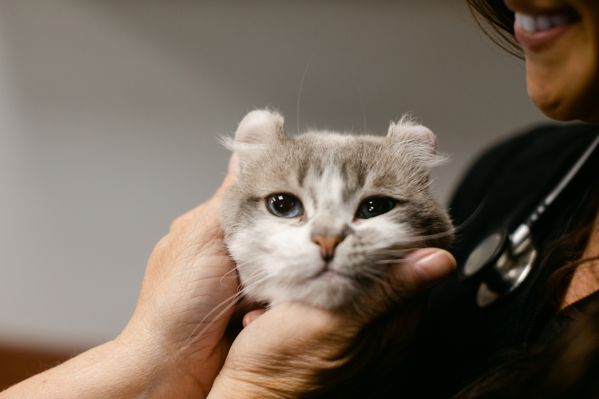Ringworm is a common fungal infection that can affect a cat's skin, nails, and hair follicles. While it's not a fatal condition, it can be very uncomfortable for your feline friend. It's also extremely contagious and can be easily spread to other animals, and even humans.
Read on to learn what causes ringworm in cats, how to treat it, and how to prevent your cat from getting it in the first place.
How do cats get ringworm?
Cats get infected with ringworm through direct skin contact with the fungus. This can come from getting too close to an infected animal, or through contact with contaminated objects and even soil.
What are the symptoms of ringworm?
The most common symptoms of ringworm in cats are patchy, ring-shaped baldness, scaly-looking skin, and rough, brittle nails.
The circular shape of the fungus doesn't present in every ringworm case, and it doesn't always cause itchiness. Sometimes, the lesions are localized to one area, and other times, they're spread out throughout the body and the skin looks reddened and crusty.
If your cat has any of these signs, there’s a chance they might have a ringworm infection.
How do you treat ringworm in cats?
While ringworm isn't fatal, it's important to clear the infection and get it treated so it doesn't continue to spread and cause discomfort.
Treatment for ringworm in cats typically involves a topical anti-fungal cream and oral anti-fungal medication prescribed by your vet.
They'll also recommend making sure your home and anywhere else your cat spends time is ring-worm free—removing pet hair from floors and furniture, using disinfectants, and ensuring the environment is free of spores as much as possible.
“You can effectively clean the environment through vacuuming or using electrostatic disposable products like Swiffer pads,” suggests Dr. Yui Shapard.
For hard surfaces, you can use a diluted bleach solution to kill any spores. Blankets, towels, and any other soft fabrics your feline friend has been in contact with should go in the laundry. And lastly, you should clean your cat's food and water bowls.
If you clean twice a week while your cat is infected, this should be sufficient in ensuring your home is spore free. While it sounds like a lot of work, all of these treatments can go a long way in ensuring your cat recovers from ringworm and doesn't infect other humans or animals.
Can you prevent ringworm in cats?
While there's no way to 100% prevent ringworm in cats, you can reduce the likelihood of infection by keeping your cat away from other animals that have an infection or appear to have ringworm-like lesions.
The second you notice potential signs of ringworms, reach out to a vet for help. And of course, if you have any specific questions about your cat's symptoms, the Vet Pros at Pawp are available 24/7 to help.
